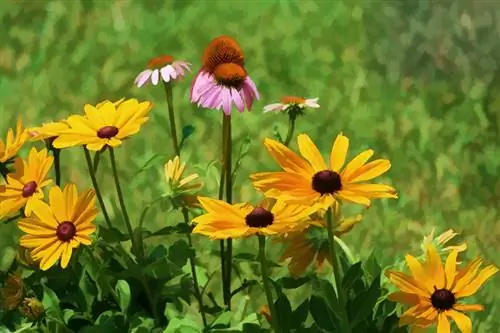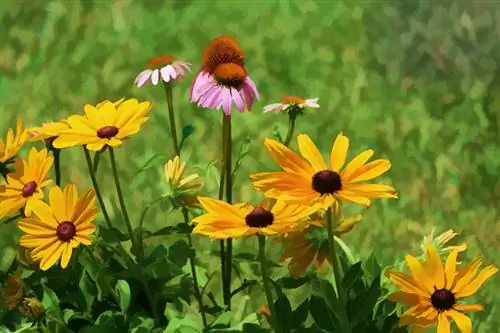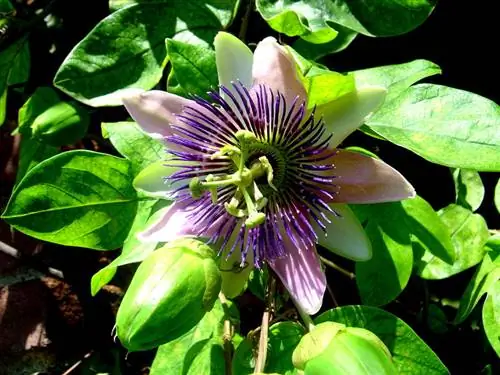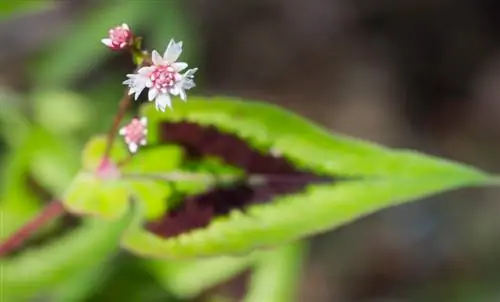- Author admin [email protected].
- Public 2023-12-16 16:46.
- Last modified 2025-01-23 11:20.
The perennial and hardy coneflower is a perennial. This applies to both the yellow coneflower (Rudbeckia) and the red coneflower (Echinacea), which is used as a medicinal plant primarily to strengthen the immune system.

What is a coneflower as a perennial?
Coneflower perennials are perennial, hardy plants that occur in the genera yellow coneflower (Rudbeckia) and red coneflower (Echinacea). They prefer sunny, warm locations, bloom between July and October and are both decorative and easy to care for.
What is a perennial?
Botanists and gardeners understand a perennial to be a plant with certain properties. Perennials are perennial and herbaceous; they do not become woody like trees or shrubs. The above-ground plant parts of many perennials die each year after the growing season and reform the next year. The underground parts (roots, bulbs, tubers or similar) overwinter. But there are also evergreen perennials, such as banana trees.
What types of coneflower are there?
Rudbeckia and Echinacea have a similar appearance with petals arranged in a radial pattern, like daisies. However, the flower head in the middle makes the genus very easy to recognize. Rudbeckia is soft, Echinacea is prickly and hard.
There are different varieties of each of the two genera of coneflower. The yellow coneflower blooms from July to October, not only in bright yellow but also in variations of orange-red or red-brown. The height of growth varies depending on the variety from approx. 40 cm to around 2 m for the slit-leaved coneflower.
The classic color of the red coneflower is purplish pink. The color palette on offer now ranges from white to soft pink and orange to orange-red. The flowering period is slightly shorter than that of the yellow coneflower, namely from July to September. Both genera are also available with double flowers.
Planting coneflowers correctly
Coneflower likes it sunny and warm, as the name suggests. The soil should be nutrient-rich, rather moist for Rudbeckia and permeable for Echinacea. Depending on the space you have, you can choose between low-growing ground cover plants and tall-growing perennials.
The most important things in brief:
- decorative and easy to care for
- hardy
- warm sunny location
- Plant as sheltered from the wind as possible
- Yellow coneflower: moist soil, flowering period July to October
- Red coneflower: permeable soil, flowering period July to September
- Echinacea: well-known medicinal plant to strengthen the immune system
Tips & Tricks
Plant the edges of your vegetable patch with echinacea to keep slugs away from your precious vegetables.






